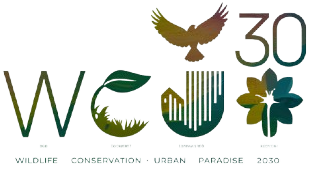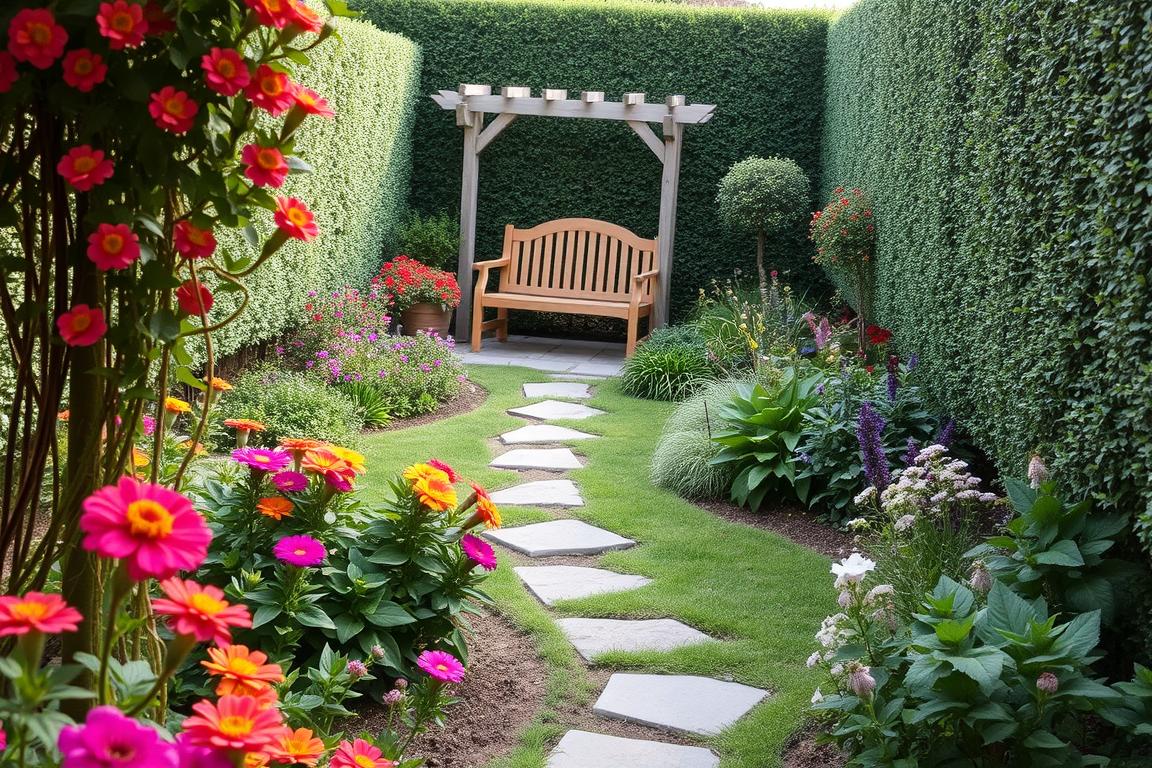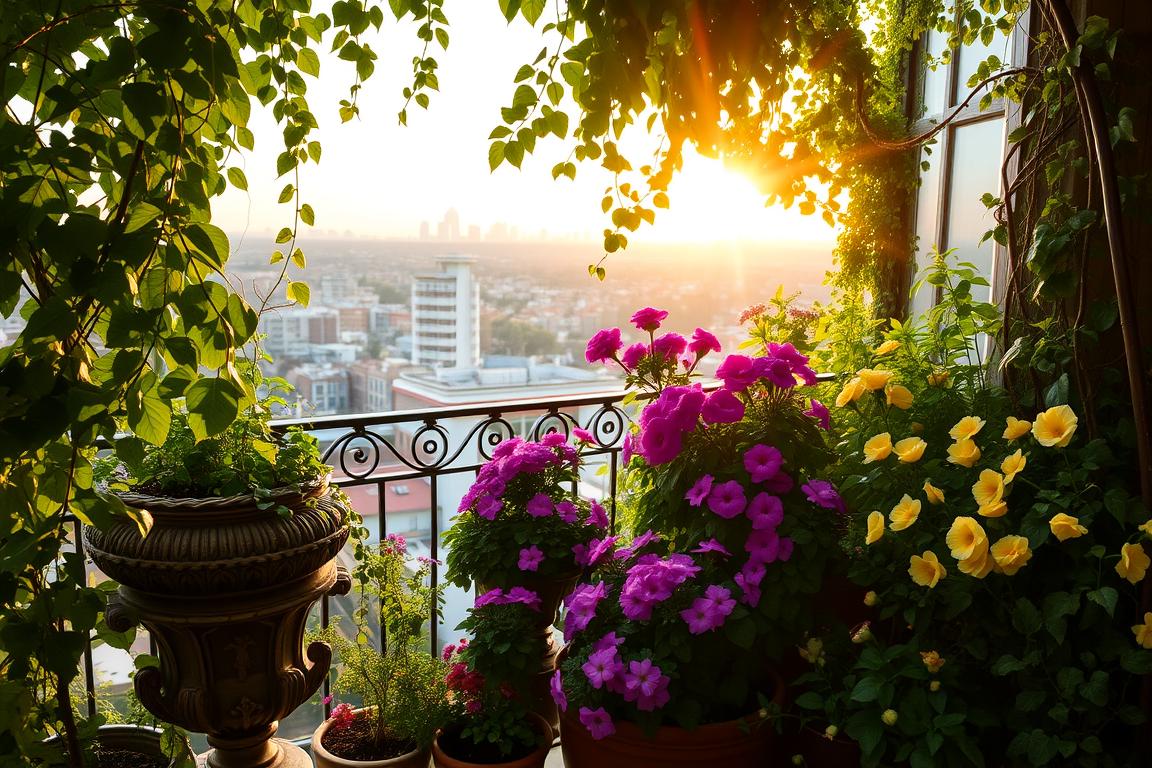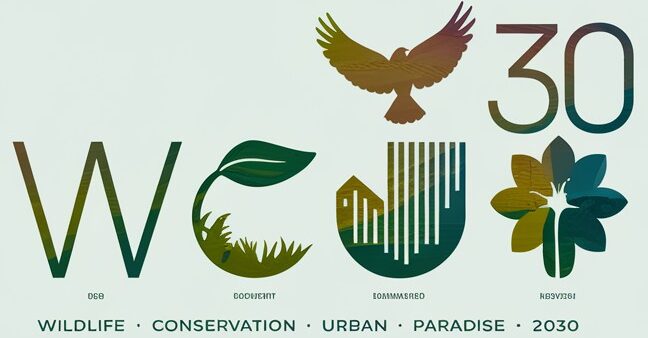Table of Contents
ToggleThe Complete Guide to Common City Birds: 20 Species You Should Know
City life is bustling and busy, but if you take a moment to look around, you’ll notice that nature thrives even in urban settings. Many bird species have adapted surprisingly well to city environments, adding charm and life to our surroundings. In this guide, you’ll learn about 20 common city birds that you should know, along with their identifying features and behaviors.
1. Rock Pigeon
The rock pigeon is one of the most common birds in cities worldwide. With its gray body and iridescent neck, this bird is easy to spot. Look for these pigeons in parks or around food stalls, as they often scavenge for scraps.
2. House Sparrow
You can recognize house sparrows by their small size and brownish color. Males have a distinctive black bib. These friendly birds are often found in urban gardens or on sidewalks, singing cheerfully.
3. European Starling
Starlings are known for their shiny black feathers, which have a purple and green sheen. They often flock in large numbers. You’ll hear them chirping and mimicking sounds in parks or around buildings.
4. American Robin
The American robin features a bright red-orange belly and is a sign of spring for many. You’ll find them hopping around grassy areas, searching for worms and insects.
5. Common Grackle
Common grackles have glossy feathers that appear black but can show purple and green hues in the sunlight. They’re often seen in large groups, making loud, chattering calls while scavenging for food.
6. Mourning Dove
Mourning doves are graceful, slender birds with soft gray and brown plumage. Their cooing sound is common in urban gardens. They often feed on seeds found on the ground.
7. Yellow-rumped Warbler
During migration, you may spot the yellow-rumped warbler amidst city trees. This small bird features a bright yellow spot on its rear and can be identified by its cheerful “chip” call.
8. Common Yellowthroat
This small warbler sports a striking yellow throat and a black mask. Often found in dense shrubs, the common yellowthroat’s song is a delightful “witchity-witchity-witch” that captures attention.
9. Red-tailed Hawk
The red-tailed hawk is a powerful predator often seen soaring high above cities. Look for its signature reddish-brown tail and hear its distinctive call echoing through the air.
10. Canada Goose
These large birds are recognized by their grayish-brown bodies and black necks. Canada geese often congregate in parks and near water bodies and are known for their honking sounds.
11. Eastern Bluebird
The eastern bluebird is breathtaking with its vibrant blue plumage and rusty-orange chest. You might find them perched on fences or in open fields, singing sweetly.
12. Black-capped Chickadee
A small bird with a distinctive black cap, the black-capped chickadee has a cheerful, recognizable call. These curious birds often visit bird feeders and are a joy to observe.
13. Downy Woodpecker
Downy woodpeckers are small with white and black plumage and a short bill. They tap on trees in search of insects, displaying a characteristic bobbing motion.
14. Common Blackbird
You can recognize the common blackbird by its all-black body and bright orange-yellow beak. Males sing beautifully, especially at dawn and dusk, adding charm to city parks.
15. House Finch
House finches come in various colors, but males typically showcase bright red plumage on their heads and chests. These cheerful birds are often found near buildings and feeding on seeds.
16. Barn Swallow
With their elongated wings and forked tails, barn swallows are graceful fliers. They hunt insects on the wing and nest under eaves and bridges, often seen flitting above water bodies.
17. Common Nighthawk
The common nighthawk is a bird that you’re likely to hear more than see. Their haunting sound is often heard during twilight. They blend effortlessly with their surroundings thanks to their mottled brown feathers.
18. Silver Gull
This seagull is commonly found in urban areas and is noted for its striking white and gray coloration. Often seen at beaches and parks, these gulls are smart scavengers.
19. Eurasian Collared-Dove
The Eurasian collared-dove is easily recognized by the black “collar” around its neck. They are calm and often found in pairs cooing softly in trees or around gardens.
20. Pileated Woodpecker
Large and striking, the pileated woodpecker has a vivid red crest. Their powerful drumming can be heard echoing through wooded areas in cities and suburbs. They often create large holes in trees searching for insects.
These 20 species of birds enrich urban environments with their colors and songs. Observing them can deepen your appreciation for nature, even amidst the concrete jungle. Keep your eyes and ears open, and you might discover a delightful avian character right outside your window!
How Urban Environments Support Diverse Bird Populations
Urban environments often get a bad rap when it comes to wildlife, but they have unique qualities that support a diverse range of bird populations. Many city dwellers may be surprised to discover how many species call urban areas home. Factors such as food availability, nesting opportunities, and the presence of green spaces contribute to this diversity.

Food Sources
One of the primary reasons birds thrive in cities is the abundance of food sources. Urban areas provide a variety of natural and artificial food supplies. For example:
- Trash and Scraps: Birds like crows and pigeons have adapted to scavenging in human environments, finding ample food among discarded meals.
- Gardens and Parks: Many city residents plant gardens, attracting insects and seeds that provide nourishment to birds.
- Birdfeeders: Many urban bird enthusiasts put out feeders, which can serve as reliable food sources for species like cardinals and finches.
Nesting Opportunities
Nesting sites in urban environments are plentiful. Cities often feature a variety of structures that birds can use for nesting, including:
- Buildings: High-rise buildings provide ledges and crevices for species like swifts and sparrows.
- Bridges and Overpasses: These structures can often mimic natural cliffs or ledges where birds find shelter.
- Street Trees: Trees lining city streets offer natural nesting spots for numerous species, including robins and woodpeckers.
Green Spaces
Green spaces, such as parks and community gardens, are crucial for supporting bird populations. These areas serve as vital habitats that promote biodiversity. Here’s how:
- Habitat Diversity: Parks often mimic natural environments with a mix of grasses, shrubs, and trees, attracting various bird species.
- Migration Stopovers: Urban parks can serve as essential stopovers for migratory birds, offering food and shelter during long journeys.
- Water Sources: Lakes, ponds, and fountains provide drinking water and bathing opportunities, which are critical for many bird species.
Urban Wildlife Corridors
Creating linked green spaces across urban areas helps maintain bird populations. These wildlife corridors enable birds to move freely between habitats, which is essential for:
- Finding Mate: Birds need to locate partners for breeding, and corridors make this easier.
- Accessing Resources: Mobility allows birds to seek food and shelter in various locations, enhancing their survival rates.
- Avoiding Predators: Wildlife corridors can provide safe routes away from urban dangers.
Reducing Urban Noise
Another aspect contributing to bird diversity in urban settings is noise management. In recent years, cities have introduced measures to mitigate noise pollution. Lower noise levels can positively impact bird populations by:
- Encouraging Breeding: Birds are known to be sensitive to sound. Reduced noise levels allow them to establish territories and communicate effectively.
- Sustaining Physical Health: Lower stress levels help birds remain healthy and active.
Community Engagement
Cities often foster a sense of community among residents who care about their local bird populations. Engaging in birdwatching and conservation initiatives opens up avenues for educating the public and promoting actions like:
- Creating Bird-Friendly Spaces: Encouraging businesses and city planners to incorporate bird-friendly designs can increase habitats.
- Hosting Citizen Science Projects: Involvement allows residents to contribute to tracking bird populations, supporting conservation efforts.
- Conducting Educational Workshops: These programs raise awareness about the benefits of diverse bird populations and how to support them.
By understanding how urban environments can support diverse bird populations, you can appreciate the vibrant wildlife present within your city. Recognizing the role of food, nesting opportunities, green spaces, and community involvement is essential to fostering a healthier ecosystem that benefits both birds and humans alike.
Identifying Common City Birds: Features and Behaviors
City environments are home to a vibrant variety of bird species. Understanding the common city birds you might encounter, along with their features and behaviors, can enrich your appreciation of urban wildlife. Here is a closer look at some of the most prevalent bird species found in cities.

1. House Sparrow
House Sparrows are small, social birds often seen in flocks. They have a stout body, short tail, and a thick bill that is perfect for cracking seeds. Males are typically brown with a black bib and white cheeks, while females are more muted in color with brown streaks.
These birds are highly adaptive and often live near humans, feeding on scraps and seeds. Their energetic chirping can often be heard in busy city areas.
2. Rock Pigeon
Rock Pigeons are commonly seen in urban settings. They have a large, plump body, short neck, and a small head. Their feathers can vary widely in color but often feature iridescent green and purple hues on their necks.
Pigeons are known for their strong homing instincts and can often be seen cooing and foraging for food in parks and plazas.
3. American Robin
The American Robin is a familiar sight throughout North America. With its bright orange belly and round body, this bird is hard to miss. Males are more vibrant, while females have slightly duller colors.
Robins are known for their melodic singing, especially during dawn. They often feed on worms and berries and are a sign of spring in many cities.
4. Northern Mockingbird
Northern Mockingbirds are outstanding mimics, capable of imitating other bird calls and even mechanical noises. They have a slender body and long tail, with grayish plumage that helps them blend into their environment.
You may notice these birds perched on fences or low branches, singing a variety of songs throughout the day and night.
5. European Starling
European Starlings are notable for their shiny, iridescent plumage that changes with the seasons. In winter, they are speckled with white, while in summer, they shine in deep purple and green hues. They have a pointed bill and long wings.
Starlings often gather in large flocks, performing stunning aerial displays called murmuration. They are known for their adaptability and scavenging abilities.
6. Common Grackle
The Common Grackle has a striking appearance with its glossy, black body and bright yellow eyes. These birds are often seen scavenging in urban areas, where they use their intelligence to find food.
Their noisy calls and bold behavior make them a recognizable part of city life.
7. Mourning Dove
Mourning Doves are delicate birds with long, pointed tails and soft gray-brown feathers. Their cooing sound is soothing and often heard in quiet parks. They feed primarily on seeds and can often be spotted on the ground or in trees, searching for food.
8. Red-tailed Hawk
The Red-tailed Hawk is larger than most city birds, with a distinctive reddish tail. These birds are often seen soaring above cityscapes or perched on rooftops and light posts.
They are skilled hunters, often feeding on small mammals and birds. Their sharp, piercing call is often heard in areas where they nest.
9. Blue Jay
Blue Jays are known for their vibrant blue, white, and black coloration. They are intelligent birds and can mimic the calls of hawks as a strategy to protect their nests.
These birds are often observed in parks, actively searching for nuts and seeds.
10. Common Yellowthroat
This small songbird usually hides in dense foliage. It features a distinctive black mask and yellow throat, making it eye-catching despite its hiding habits. The Common Yellowthroat is known for its cheerful, warbling song.
By learning to identify these common city birds, you’ll gain a deeper understanding of the natural world around you. Each species brings unique features and behaviors, contributing to the urban ecosystem. Whether you’re a casual observer or an aspiring birdwatcher, paying attention to these feathered residents will surely enhance your city experience.
The Importance of Birds in Urban Ecosystems
Birds play a crucial role in urban ecosystems, providing numerous environmental, social, and economic benefits. As cities expand and urban areas grow, understanding the importance of these feathered inhabitants becomes increasingly vital. From maintaining ecological balance to enhancing our quality of life, city birds contribute significantly to the urban landscape.
Essential Ecosystem Services
Urban birds offer essential ecosystem services that are critical for city health:
- Pollination: Many urban birds assist in pollinating plants, helping maintain green spaces and parks. This, in turn, supports biodiversity and improves air quality.
- Seed Dispersal: Birds help in the dispersal of seeds from fruits they consume, promoting the growth of new plants and maintaining vegetation cover in urban areas.
- Pest Control: Birds feed on insects, including pests that can damage gardens and landscapes, thus acting as natural pest controllers.
- Waste Management: Through scavenging, birds help clean up organic waste, aiding in the overall cleanliness of urban spaces.
Indicators of Environmental Health
Birds serve as indicators of environmental health. Their presence or absence can signal changes in urban ecosystems. For instance:
- High bird diversity and abundance typically indicate a healthy environment.
- A decline in bird populations can suggest issues like habitat destruction or pollution.
By monitoring bird populations, urban planners and ecologists can gain valuable insights into the state of the ecosystem and adjust conservation strategies accordingly.
Enhancing Urban Aesthetics and Community Engagement
Birds greatly enhance the aesthetic value of urban environments. Their colorful plumage and melodious songs add beauty and a sense of vibrancy to neighborhoods. Here’s how they impact community engagement:
- Biodiversity Appreciation: Observing local birds encourages appreciation for nature and biodiversity, leading to community stewardship initiatives.
- Educational Opportunities: Birds serve as excellent subjects for educational programs in schools and community centers, fostering an interest in wildlife and environmental science.
- Birdwatching Activities: Many communities organize birdwatching events or “Big Days,” promoting social interactions and connection to nature.
Urban Planning and Bird-friendly Spaces
With the right planning, cities can create bird-friendly habitats. native plants in urban landscaping not only supports resident bird species but also increases the overall biodiversity of the area. Consider these strategies:
- Native Plant Landscaping: Using native plants can provide food and shelter for birds, encouraging them to visit and stay in urban areas.
- Water Features: Adding birdbaths or small ponds can attract a variety of bird species, providing them with essential water resources.
- Green Roofs and Vertical Gardens: These structures can serve as wildlife habitats and contribute to a city’s biodiversity while also reducing urban heat.
Challenges Facing Urban Birds
Despite their importance, city birds face numerous challenges:
- Habitat Loss: Urban development often leads to the destruction of natural habitats threatening bird populations.
- Pollution: Air and noise pollution can adversely affect bird health and their ability to reproduce.
- Climate Change: Changing weather patterns impact migration and nesting, disrupting avian life cycles.
Addressing these challenges requires collaborative efforts between urban planners, policymakers, and residents to create more sustainable cities.
Inspiring Action for Conservation
It’s essential to inspire action for bird conservation in urban areas. Simple practices like creating bird-friendly habitats in backyards can significantly contribute to their survival. Schools and community groups can promote awareness and conservation efforts, ensuring that future generations value and protect urban bird populations.
By recognizing the vital role birds play in urban ecosystems, we can advocate for their protection and promote practices that support their thriving presence. Together, we can create cities that foster biodiversity and enhance our urban lives.
Tips for Birdwatching in Your City: Techniques and Tools
Birdwatching in your city can be a rewarding and enjoyable activity. Whether you are a seasoned birder or just starting, knowing some techniques and tools will enhance your experience. Many urban areas are teeming with various bird species, and with the right approach, you can connect with nature without leaving the city limits.
Dressing for Success
Your choice of clothing can impact the quality of your birdwatching. Opt for colors that help you blend into your surroundings. Neutral tones like beige, brown, or green work well. Wearing comfortable shoes is also key since you might be walking or standing for extended periods. Consider bringing layers to adapt to changing weather conditions, especially if you’re out for a long duration.
Choosing the Right Time
The early morning or late afternoon is often the best time for birdwatching. During these times, birds are more active and likely to be feeding. Early risers can enjoy the sweet sounds of birds welcoming the day. If you can make it before dawn, that’s even better. During spring and fall, bird migration provides additional opportunities to spot new species.
Selecting the Best Location
Not every spot is ideal for birdwatching. Here are some locations you should consider:
- Parks: Local parks often have ample trees, shrubs, and open spaces where birds can thrive.
- Water Bodies: Beaches, lakes, and ponds attract various bird species. Look for ducks, gulls, and waders.
- Urban Gardens: Community or botanical gardens can be excellent places to observe birds.
- Rooftop Spaces: High vantage points can provide unique insights into city-dwelling birdlife.
Equipment Essentials
Having the right tools can elevate your birdwatching experience. Here’s a list of must-have gear:
- Binoculars: A good pair allows for closer observation without disturbing the birds. Look for binoculars that offer at least 8x magnification.
- Field Guide: A bird identification book or app can help you recognize different species. Choose one that covers local birds.
- Notebook: Keep a journal of your sightings. Writing down details of the birds you see will help you remember and learn about them.
- Camera: If you’re interested in photography, a decent camera can capture stunning images of urban birds.
Practicing Patience and Observation
Successful birdwatching hinges on your ability to observe and be patient. Here are some tips to keep in mind:
- Find a quiet spot and stay still. Avoid sudden movements or noises that can scare birds away.
- Take time to observe the environment. Look for movements and listen for calls that can help you locate birds.
- Be aware of their behavior. Different species behave in distinct ways, which can help you identify them.
Joining Birdwatching Communities
Connecting with other birdwatchers in your city can enrich your experience. Look for local birdwatching groups or online communities where you can share tips, sightings, and experiences. Participating in group outings or organized bird counts can help you learn from others and deepen your appreciation for urban wildlife.
Respecting Wildlife
Always remember that you are a guest in the birds’ environment. Follow ethical birdwatching practices to ensure their safety and well-being. Avoid disturbing nests or approaching birds too closely. Maintain a respectful distance, and use binoculars to observe birds without intruding on their space.
With these techniques and tools, you can enjoy fulfilling birdwatching adventures right in your city. Every outing presents an opportunity for discovery, providing joy and tranquility amidst the urban hustle. Take the time to appreciate the incredible diversity of birdlife that coexists with us in our daily lives!
Conclusion
As you explore the fascinating world of city birds, you’ve discovered that urban environments are surprisingly rich in biodiversity. The presence of various bird species, from the resilient sparrows to the striking blue jays, showcases nature’s adaptability. Understanding the unique features and behaviors of these common birds not only enhances your appreciation of them but also plays a crucial role in urban ecosystems. Birds contribute to pest control, seed dispersal, and pollination, which ultimately benefits the health of your city.
With the right techniques and tools, birdwatching can become an enjoyable and rewarding activity you can engage in from your backyard or local park. Whether you choose to take a quiet stroll with binoculars or set up a bird feeder, there are countless ways to connect with the avian community around you. By observing the birds and taking note of their characteristics, you’re not just finding a hobby; you’re participating in the conservation of urban wildlife.
Your newfound knowledge of the 20 species outlined in this guide equips you to identify and appreciate the vibrant life around you. With each bird song and flutter of wings, you contribute to a greater understanding of urban ecosystems. So grab a field guide, and let your curiosity lead the way. The city is teeming with life waiting for you to discover it. Remember, each bird sighting is an opportunity to connect with nature—no matter how bustling the city may be. Happy birdwatching!















One Response
Parabéns, é um conteúdo excepcional! Estou impressionado com a sua qualidade! Conteúdo de altíssimo nível! Seu post é uma inspiração! Seu trabalho é admirável! 🙏🏾